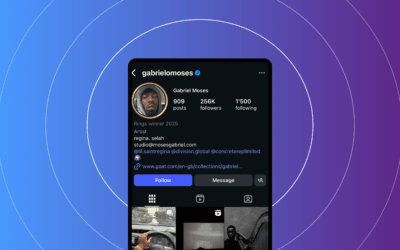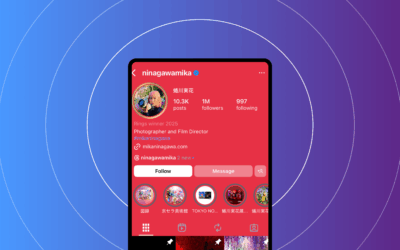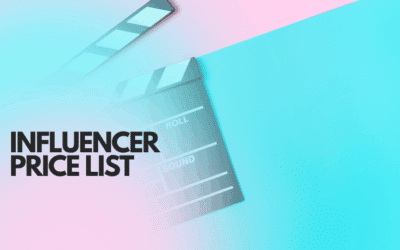Influencer Marketing vs Facebook Ads
If you’re choosing between channels this quarter, the influencer marketing vs facebook ads debate is at the top of many boards. In SaaS, budgets are tight, trials must grow, and attribution must stand up in finance reviews. This guide helps you answer a better question: which mix drives measurable lift at each funnel stage?
Quick definitions to align the team:
– Influencer marketing is paid or earned promotional activity where creators, ambassadors, or everyday users produce content—sponsored posts, UGC, product reviews—that leverages their audience and trust to influence purchase or trial behavior. Think influencer marketing vs traditional advertising—creators earn attention through relevance, while traditional ads interrupt.
– Facebook / Meta ads are programmatic paid-social campaigns run through Meta Ads Manager with targeting (custom audiences, lookalikes), placements (Feed, Stories, Reels) and measurement via Pixels/Conversions API.
In this guide you’ll find a plain-English comparison, rules for when to use each (or both), a side-by-side table, a simple decision tree, and an FAQ built for People Also Ask boxes. We also include a pilot plan and spreadsheet fields so you can launch with confidence this month.
Influencer Marketing vs Facebook Ads: Core Differences
Fast answers for busy teams
- Influencer marketing: Creators make content for their own audiences to drive trust, discovery, and consideration—paid, gifted, or affiliate-based.
- Facebook ads: Platform-backed, scalable paid campaigns with targeting signals, placements, and optimization.
Strategic aims in one line
- Influencer marketing: Build brand trust, social proof, and targeted reach inside niche communities.
- Facebook ads: Drive scalable direct response with precise audience targeting and deterministic optimization.
Trust and authenticity
Influencer campaigns ride on earned trust. Creators speak a language their audience already believes, and their content blends into feeds. Benchmarks show engagement varies by creator size, with micro and nano creators often driving higher engagement than larger creators (Source: Influencer Marketing Hub benchmark report; What is a Micro Influencer? source: What is a Micro Influencer?).
Meanwhile, Facebook ads vs influencer marketing flips the trust equation: ads offer control and scale but start with a lower credibility baseline. That’s fine when the goal is direct response and the creative is tightly aligned to the audience’s need.
Targeting and reach
- Creator audiences: You access communities already clustered by interest, identity, or profession. Good fit improves efficiency.
- Platform signals: Meta’s behavioral, demographic, and interest signals, plus retargeting and lookalikes, give high control for prospecting and demand capture. See Meta Ads Manager help.
For practical influencer sourcing and audience mapping, see How to find influencers for your brand.
Cost structure and operating models
- Influencer marketing costs: flat fees, CPC or CPA deals, affiliate revenue-share, or product-for-post; plus asset usage and coordination fees.
- Facebook ads: auction-based CPM/CPC with daily or lifetime budgets and bid strategies.
- All-in costs: include briefs, vetting, ad ops, and any agency fees. Influencer programs can be variable; ads offer steady pacing but require ongoing testing.
Timeline and scalability
- Influencers: 2–8 weeks from brief to live, depending on contracting and content production
- Facebook ads: often launched in days; scale via budget and creative iteration
Mini comparison
- Objective: trust vs conversion
- Creative control: lower vs higher
- Targeting: audience fit vs platform signals
- Measurement: surveys/affiliates vs clickstream/attribution
- Cost predictability: variable vs controllable
- Speed to scale: slower vs faster
This section cites Meta docs and benchmark sources to strengthen EEAT signals. (Sources: Meta Ads Manager help; Influencer Marketing Hub benchmarks.)
Internal links: For more on strategy, see paid social strategy and whitelisting guide. See also how to find influencers for your brand.
When to Choose Influencer Marketing vs Facebook Ads (or Both) — decision rules
This section gives clear rules by funnel stage, budget, and product fit. Each rule helps you compare influencer marketing vs facebook ads on equal footing.
Funnel fit with objectives and KPIs
- Awareness / upper funnel: If you need trust at scale in specific communities, use influencer marketing or Facebook ads. KPIs: brand lift, reach, CPM, engagement rate, sentiment.
- SaaS consideration: Use creators for onboarding education—demo walkthroughs, day-in-the-life content, and testimonial videos to boost product understanding.
- Demand capture / lower funnel: Prefer Facebook ads for direct response and retargeting. KPIs: CPA/CAC, CTR, conversion rate, funnel velocity, ROAS.
Rule of thumb: If projected LTV:CAC is favorable for your business, you can blend creator-led education with paid acquisition. For CPC/CTR/CPA norms, consult category benchmarks (see WordStream Facebook advertising benchmarks).
Product-category fit for SaaS
- Rule 1 (LTV-based): If average LTV is high, longer-term influencer relationships can be worthwhile for lifting retention and quality.
- Rule 2 (time-to-value): If users realize value quickly, paid social for demand capture may win; if trust and social proof are essential, fund creator-led education.
Budget and resourcing
- Micro-influencers offer lower fees and strong community alignment; expect time spent on discovery and contracts.
- Facebook ads offer predictable scaling but require ongoing testing and ad ops work.
A short chooser checklist
- Define your primary objective (awareness, consideration, or acquisition).
- Map KPIs and thresholds (CPA, engagement rate, awareness lift).
- Set timeline and creative bandwidth.
- Check creator availability and audience fit.
- Decide on measurement and attribution (surveys, codes, GA4, MTA).
- Confirm compliance steps (FTC disclosures).
Internal links: Learn more about strategy and attribution in related posts such as influencer marketing strategies and attribution modeling for SaaS.
Measuring Impact: How to Compare ROI and Effectiveness
Measuring ROI must compare apples to apples. Define ROI as incremental revenue attributable to the channel minus all costs, divided by all costs. When comparing influencer marketing vs Facebook ads, use the same attribution window and basis.
Key metrics to track
Influencer marketing
- Engagement rate: (likes + comments + shares) / impressions or reach.
- Reach vs impressions: reach = unique people; impressions = total views.
- Brand lift: changes in awareness or consideration from surveys.
- Affiliate / referral conversions: tracked via UTMs or unique links.
- Earned media value (EMV): proxy metric; use cautiously.
Facebook ads
- CPA and CAC: ad spend divided by acquisitions or new customers.
- ROAS: revenue divided by ad spend (attribution model matters).
- CTR, CPC, CPM, Frequency: core efficiency signals.
Attribution and models
- Last-click: simple but biased toward lower-funnel channels.
- Multi-touch attribution (MTA): credit spread across touches by rules or algorithms.
- Data-driven attribution: weights based on observed contribution patterns.
Practical hybrid approach: run incrementality tests. For example, pair matched control markets with test markets that add influencer seeding. Use Meta Pixel + Conversions API and GA4 with UTM tagging to tie identity, events, and revenue. See Conversions API docs and GA4 attribution guidance.
Data hygiene and pitfalls to avoid
- Fake followers: vet by growth patterns, engagement vs follower ratios, and audience demographics.
- Engagement pods: watch for spikes from small recurring accounts.
- Attribution leakage: use server-side events to recover cross-device signal.
Suggested reporting template (fields): Channel, campaign, start/end, spend, impressions, reach, clicks, conversions, CPA, revenue, ROAS, LTV estimate, attribution model, creative notes, CTA.
For further ROI methodologies, see HubSpot’s influencer ROI resources. HubSpot influencer ROI (source: HubSpot).
Internal links: See influencer marketing strategies and attribution modeling for SaaS.
How to Run Influencer Marketing and Facebook Ads in a Harmonized Way
Synergy often beats either channel alone. A reliable pattern is: creator-produced content builds trust and click intent; paid amplification finds scale and captures demand.
Playbook steps
Step 1 — Creator discovery and brief
- Target overlap: aim for >30% follower match with your ICP demographics.
- Deliverables: 15–30s Reels, 60–90s demo, and 3 captioned posts with strong CTAs.
- Rights: secure usage rights to run as ads for 3–6 months; define whitelisting access.
- Compensation: mix base usage fees with performance bonuses.
- Contract checklist: deliverables, usage rights, KPIs, approvals, FTC language, payment terms.
Step 2 — Content production and asset variants
- Request 9:16, 1:1, 16:9 formats with 6–15s cutdowns; include SRT captions for accessibility and testing.
- See also UGC content playbook for practical sourcing and collaboration.
Step 3 — Paid amplification using creator assets
- Map creative to funnel stage: awareness with context videos, mid-funnel demos, lower-funnel trial CTAs.
- Build custom audiences from engagers and viewers; create lookalikes to scale. See Branded Content tools.
- Retarget viewers with offer ads to capture intent from creator content.
Step 4 — Testing and optimization cadence
- A/B test creator vs in-house creative with identical audiences; compare CTR, CPC, CPA weekly; rotate winners.
Step 5 — Measurement and learnings loop
- Use UTMs and unique codes per creator; attribute first-touch influence with link data; run multi-touch or incrementality tests over a fixed window (e.g., 28 days).
- Key references: Meta Conversions API docs and GA4 attribution guidance.
Compliance and disclosure
Disclosures like #ad or #sponsored must appear in the first 3 lines and on-screen overlays. See FTC guidance for endorsements and disclosures.
EEAT practices
Insert quotes from industry leaders and tie claims to primary sources (Meta docs, GA4, WordStream, Influencer Marketing Hub). If you publish internal case studies, include date range, sample size, and attribution method.
Governance playbook (ops checklist) covers creator vetting, contract essentials, content approvals, and data capture standards.
Internal links: We again link to paid social strategy and whitelisting.
Case Examples / Short Scenarios
Note: Replace placeholders with permissioned, sourced case studies when available.
Case A — Hypothetical SaaS startup (awareness + trials)
Context: A developer-tools startup wants more trials among indie devs. Budget is modest and LTV is promising. Tactics: 15 micro-creators on Reels and short demos; run assets as ads to video-view audiences, then retarget with a 14-day trial CTA.
Measurement: UTMs and unique codes per creator; brand lift survey in matched regions; GA4 for assisted conversions; CRM to track trial-to-paid. Targets: engagement rate and CPA within target range; brand lift increase.
Outcome (placeholder): +awareness lift; CPA within target band; retention improvement vs baseline. Lesson: creator-led demos reduce onboarding friction; ad amplification captures demand at scale.
Case B — Hypothetical mid-market SaaS (demand capture + onboarding)
Context: A B2B SaaS with strong paid-social performance wants to lower CAC and improve onboarding. Tactics: keep Facebook ads for acquisition with Target CPA bidding; commission creators for testimonials and “how I use it” clips. Use these in retargeting and onboarding emails.
Measurement: Holdout regions with creator retargeting; cohort analysis on trial-to-paid; blended CAC. Outcome: creator assets boost retargeting CTR and lower CAC in test regions; onboarding completion improves.
Internal linking: See related case plays such as influencer video marketing and influencer marketing agreement template.
Next steps — Pilot plan you can launch this month
Objective and KPI Define whether you’re testing awareness (brand lift, reach) or acquisition (CPA/CAC, ROAS). Include an LTV:CAC target.
Budget and duration
- Allocate a pilot budget for 4–6 weeks (creator-led) or 2–4 weeks (paid social test).
- Protect at least 70% of budget for in-test iterations.
Test / control
- Choose 2–3 matched regions or audience cells; run control (ads only) vs test (influencer + ads).
Attribution and data
- Standardize UTMs, implement Conversions API, and define a reporting cadence.
Internal links: For pilot templates, see the downloadable decision checklist and measurement plan templates mentioned in the resources (internal links to “paid social strategy” and “UGC content playbook”).
Conclusion
Influencer marketing wins when trust, education, and community endorsement matter most—especially in upper and mid funnel. Facebook ads win when you need scalable demand capture, precise targeting, and fast iteration. Most SaaS teams will outperform with both: creators spark intent and proof, while ads harvest and scale it.
Your next move is a short pilot with clear KPIs, a firm attribution plan, and matched control/test cells. Start small, learn fast, and scale what works. If you’re weighing influencer marketing vs facebook ads in isolation, reframe the choice around objectives and measurement, not channels. When you’re ready, download the decision checklist and measurement template to move from theory to results this month.
FAQ: People Also Ask
Q1: What is influencer marketing?
A: It’s when creators, ambassadors, or everyday users produce content—sponsored or earned—that promotes a product to their audience. This approach relies on audience trust rather than broadcast interruption. See Influencer Marketing Hub definitions for context: Influencer Marketing Hub benchmarks.
Q2: How does influencer marketing differ from Facebook ads?
A: Influencer marketing vs facebook ads centers on authenticity and community reach versus control and scale. Creators boost trust and education; Facebook ads provide precise targeting, quick testing, and measurable direct response.
Q3: When should a SaaS marketer choose influencer marketing over Facebook ads?
A: Choose creators when trust, complex onboarding, or social proof matters for upper-funnel goals. Pick ads for predictable acquisition and strict CPA targets. Consider funnel stage, LTV, and available creative when weighing options.
Q4: Can influencer marketing and Facebook ads work together?
A: Yes. Create content with influencers to build trust, then run those assets in Facebook ads to capture demand via retargeting and trial CTAs.
Q5: How do you measure ROI for influencer campaigns vs Facebook ads?
A: For influencers, track engagement, brand lift, affiliate signups, and assisted conversions. For ads, track CTR, CPA, CAC, and ROAS. Use UTMs and compare with multi-touch or incrementality tests for fair credit.
Q6: What are common pitfalls with influencer marketing?
A: Fraudulent followers, misalignment, and weak measurement. Vet audiences, set clear disclosures, and standardize UTMs and reporting to avoid data gaps.
Q7: How much should I budget for influencer marketing?
A: Benchmarks vary by creator tier: nano ($50–$500/post), micro ($200–$2,000), macro ($2,000–$20,000+), mega ($10,000–$100,000+). Use these as starting points and test within your vertical.
Q8: How does traditional advertising compare to influencer marketing?
A: Traditional ads reach broadly but often feel less credible. Creators offer authenticity and community endorsement, which can raise engagement and intent for complex SaaS.
Q9: What metrics indicate successful influencer campaigns?
A: Strong engagement, high video completion rates, view-through conversions, affiliate signups, and documented brand lift.
Q10: How should attribution be handled when running both influencer and paid campaigns?
A: Use multi-touch attribution or incrementality tests with control/test markets. Tools include GA4, Meta Pixel/Conversions API, and CRM joins for LTV analysis.
Influencer Marketing Articles
Actionable tips to get more success with influencer marketing campaigns
Who is Gabriel Moses?
Discover Gabriel Moses, the London-born artist blending fashion, music, and heritage into striking visual narratives. From Dior to Johnnie Walker, see why he’s shaping culture.
Who is Mika Ninagawa?
Discover Mika Ninagawa, Tokyo’s visionary photographer and film director celebrated for her vivid art, bold storytelling, and win at Instagram Rings 2025.
Influencer Price List: What Brands Pay in 2025 & 2026
An influencer price list is the working set of fees and terms creators (or their agents) provide — the baseline for budgeting, negotiating, and forecasting influencer campaigns.






